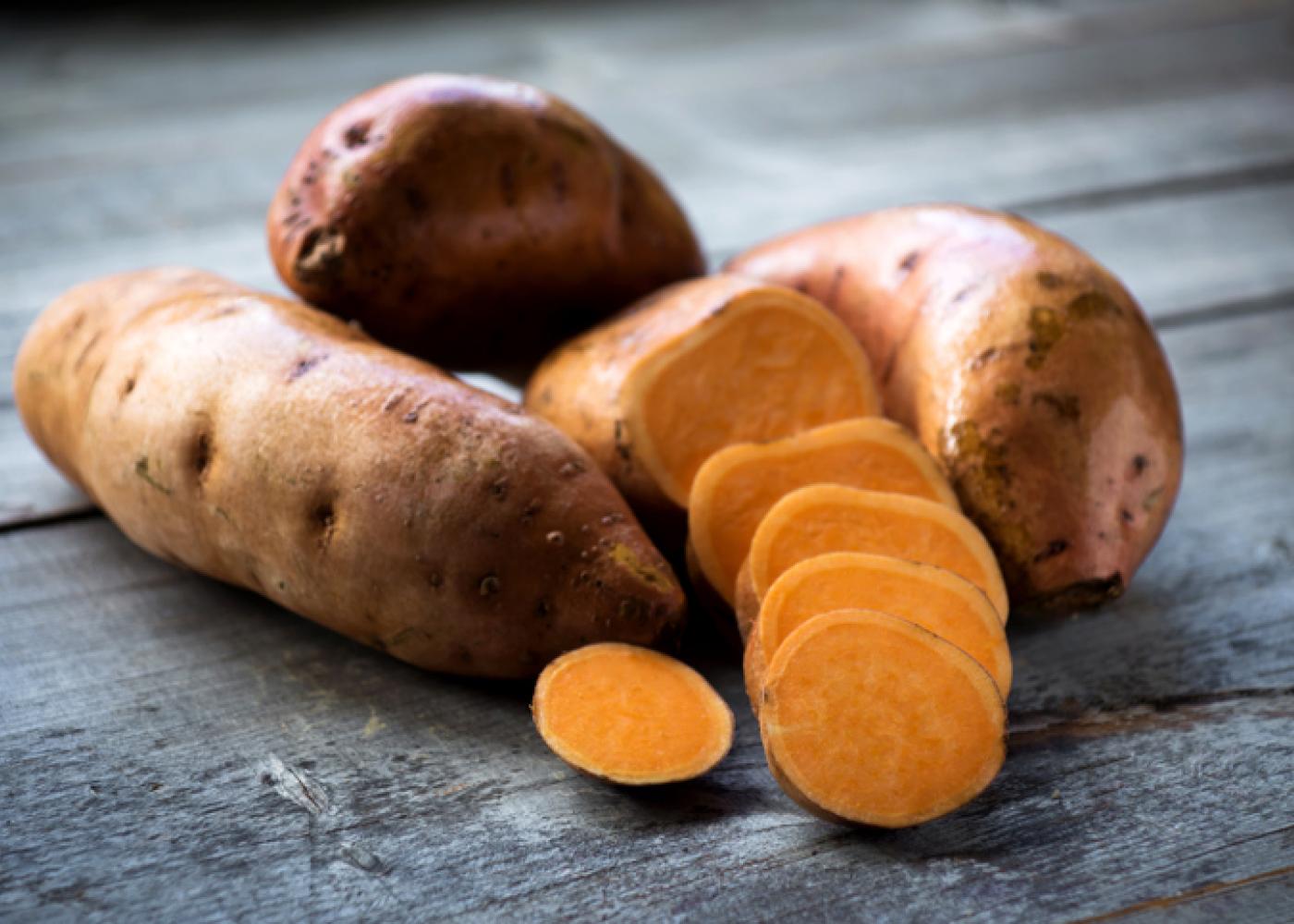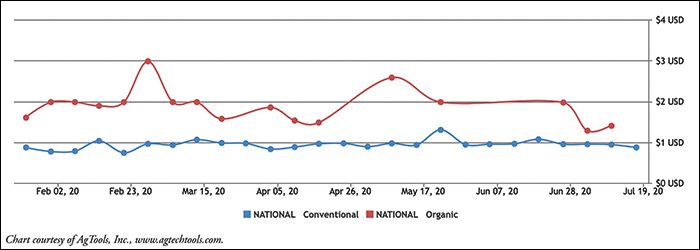Report A
Choice and Intro

Image source: USDA
1. How prevalent is your crop in the U.S. diet? Explain.
Sweet potatoes, scientific name Ipomoea batatas (L.) Lam, are considered one of the most important food crops in the world (Islam, link). Though it shares the word “potato” in its name, sweet potatoes only had 3 billion pounds harvested compared to over 44 billion pounds of potatoes in 2015.
Figure source: Vox
Sweet potatoes were not that well known in the United States until World War II. The crop was grown along with potatoes, because they were much easier to take care of compared to other vegetables. They were a staple of the American diet. Sweet potatoes became popular because of their cheap prices and sweetness. The sweetness was a rare treat for people’s sweet tooth, because Americans back in the day did not have enough cash to spare for sugar (Husted, Link).

Image source: NPR
The popularity of sweet potatoes has recently increased, which is apparent by the nearly 42 percent increase in consumption in the U.S. between 2000 and 2016, reaching 7.2 pounds per capita. The sudden spike in popularity may have been because the tuber’s health benefits (Ag Marketing Resource Center, Link). Fad diets may have also been a factor: sugar intake is cut and more fiber and antioxidants are consumed. The sweet potato meets all of these requirements. In 2017, Americans consumed nearly double the amount of sweet potatoes in 2000: 7.5 pounds per person compared to about 4 pounds of sweet potatoes per person (Husted, Link).
Sweet potatoes are rich in fiber, antioxidants, and other important nutrients. Polyphenols, anthocyanins, and dietary fiber are also present in the crop., which are important for human health. Sweet potato roots are a good source of carbohydrates, and sweet potato tops (leaves and stems) contain additional nutritional components that are much higher quantities compared to other commercial vegetables. The crop is rich in vitamin B, ß-carotene, iron, calcium, zinc and protein (Islam, link).
2. Is your crop commonly grown in the U.S.? If so, how much? Explain.
Sweet potatoes are commonly grown in the United States. By the end of the World War II, more than 3 billion pounds of sweet potatoes were being grown by U.S. farmers. Production in the U.S. dropped by a billion pounds within two years after the war, and in 1980, less than 1 billion pounds total were being produced, according to the U.S. Department of Agriculture. Sweet potatoes are suitable for growth in the United States’ climate. They are local to the majority of U.S. farms. In 2015, U.S. farmers produced 3.1 billion pounds of sweet potatoes (Husted, Link).
Figure Source: Michigan State University
The largest producer of sweet potatoes in the U.S. is currently North Carolina. Tobacco farmers have switched to growing sweet potatoes, because it is a good cash crop to replace tobacco (Husted, Link). The peak season for the growing of sweet potatoes is October through March (University of Kentucky, link).
3. How much do we import/export? Explain.
A decade since 2017, there has been a dramatic increase in the amount of sweet potatoes being exported. A lot of the U.S.’s potatoes are exported to Europe, specifically northern Europe and Great Britain (Husted, Link). The United States imports $9.02 million USD of sweet potatoes from Dominican Republic and is the top exporter for the crop at an estimated value of 217.79 million USD. The United States exports to the northern European countries: Norway, Ireland, Switzerland, Finland, the U.K., France, Germany, and the Netherlands. Canada and Mexico also receive U.S. exports of sweet potatoes. The country exports the most to the Netherlands with values of 70.14 million USD, followed by the U.K. with 56.94 million USD, then Canada with 50.46 million USD, Germany with 21.67 million USD, and France with 18.57 million USD. Though China is the top producer of sweet potatoes, it does not export a lot: only $11.58 million to the U.K. (Tridge, Link).
Figure Source: Tridge
4. Can you find your crop in the supermarket? If so, what country does it come from? Explain.
Sweet potatoes can be found in the supermarket in the U.S. Most of the sweet potatoes found in the store come from the U.S. itself, mainly North Carolina. Other U.S. states that produce a large quantity of sweet potatoes are California, Mississippi, and Louisiana (Ernest, Link). Sweet potatoes are primarily grown in southern states because of soil and temperature conditions that are meet (Ag Marketing Resource Center, Link). China produces almost 90% of the 130,000,000 some tons of sweet potatoes produced worldwide. The crop is one of the top five food crops produced and is grown in over 50 countries. In 2015, 3.1 billion pounds of sweet potatoes were produced by U.S. farmers (Husted, Link).

As with most crops, the organic sweet potato costs more than its conventional counterpart as seen in the figure above (Produce Blue Book, link).
5. Last, please try to find and describe the longest, most-detailed, and interesting written story or essay on your crop.
Required recommendation 1: as a first step, try a Google search with these terms: “your_crop_name magazine article” where you’re chosen crop goes in the search. Required recommendation 2: there are several magazines known for publishing long, detailed pieces about the food system. These include The Atlantic Monthly, The New Yorker, and The New York Times Magazine.” So do at least three more Google searches after adding “Atlantic”, “New Yorker”, and “New York Times Magazine” to your earlier search. After finding some sources, list a couple of the best ones and add their URLs.
Finally, describe the very best source with a short paragraph of four or more sentences.
Articles:
Chosen Article: Can Sweet Potatoes Save the World?
Decades ago, the popularity of sweet potatoes was basically nonexistent. Sweet potatoes were not a viable option for food production, since they looked so ugly in comparison to other vegetables. They had odd shapes and sizes that may make consumers reconsider wanting to buy this vegetable. Though they are chock full of vitamins and nutrients, its appearance would deter consumer purchases. NC State was trying to rectify this issue by breeding varieties of the sweet potato. They managed to produce a variety called Covington. This variety of sweet potato has the familiar shape, size, and look that are sold in grocery stores today. North Carolina soon became a sweet potato producing powerhouse and produces the majority of U.S. sweet potatoes to be exported to other countries such as Europe. Sweet potatoes are already a staple of the diet in African countries such as Uganda, but the sweet potatoes grown in Africa are hardly reminiscent of the American variant besides the outer skin’s texture. Instead of the orange color that is often associated with the sweet potato and the brown outer skin, African sweet potatoes are white, cream-colored or yellow on the inside and have slightly purplish outer skin. The African variant is also not as sweet or soft as their American cousins and do not have the nutrients either. Research has been put forward for producing varieties of orange-fleshed sweet potatoes that can be grown in Uganda. There is also the issue with pests: Weevils destroy more than 70% of sweet potato crop by burrowing into the dry, cracked soil caused by droughts and a lack of irrigation.


